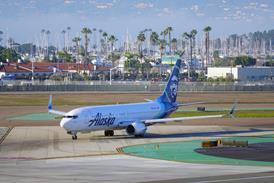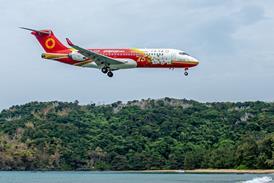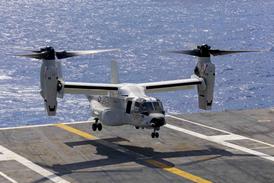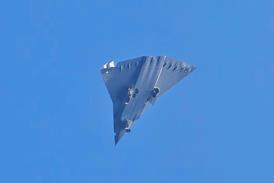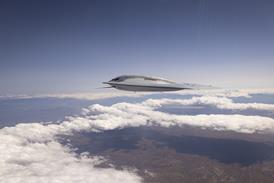British Airways changed its pilot-recruitment strategy this year after it foresaw a potential shortage of flight crew to replace retiring staff as it seeks to ensure sufficient capacity for its growing fleet.
In August, the UK carrier launched its biggest pilot-recruitment programme in more than a decade to put about 800 new staff on the flight decks by 2016. While it needs about 100 new pilots a year to maintain its roughly 3,200-strong cockpit workforce, the company aims to recruit around 150 flight crew members a year. Half these employees should come via direct entry from other airlines and the military, while the other half will be career starters who will require ab initio flight training before they can take off "on the line".
 |
|---|
| © British Aiways British Airways is aiming to recruit 800 new flight crew by 2016 |
In recent years, BA's new pilots have included qualified career starters who financed their own training, but it did not recruit applicants from ab initio level. "We did not have the need for large numbers," says Captain Robin Glover, BA's head of pilot recruitment.
Until 2001, the airline sponsored the flight training of young people who had showed the required profile in aptitude tests and interviews. BA contracted external flight academies and paid professional fees for its future flight crew. This model changed as flying colleges started to increasingly train self-funded students, who arranged bank loans that allowed them to start repayments after securing a job. This became predominant as airlines such as EasyJet and Ryanair expanded rapidly, requiring many new pilots.
CANDIDATE POOLS
Things changed again with the financial crisis in 2008, as banks became less keen to provide unsecured funds. This made it hard for talented people from poorer backgrounds to start flight training and, conversely, reduced the candidate pools for people who could arrange funding of about $160,000 for the training.
"One year ago, we realised that unless we did something with the banks it was likely that there were not going to be many people who could afford to present themselves to the colleges with the funds to train," says Glover.
BA's ab initio pilot trainees must still secure their funding but the airline will guarantee their loans. "The fundamental difference is that we help the individual secure the finance we lowered the barrier," says Glover. "Anyone who has the ability, regardless of background or financial circumstances, can now have the funds made available to them."
 |
|---|
| © British Airways Good team-working skills are equally as important to BA as the ability to fly manouvres well |
The trick for BA is it does not need to pay a penny towards the training, unless the cadet fails to get a job or drops out of training. However, applicants have to go through the aptitude tests and interviews to be selected for the scheme so the risk that the airline is left to pick up the tab is low.
TRAINING SYLLABUS
Successful applicants will be taught at CTC Aviation Training, Oxford Aviation or Flight Training Europe, which is based in Jerez, Spain. They will go through the European Aviation Safety Agency-mandated training syllabus via the private pilots licence (PPL) for the basic flying skills, multi-engine rating, instrument rating, commercial pilots licence and all airline transport pilots licence (ATPL) exams to gain a "frozen" ATPL.
This becomes active when the person has gained sufficient flight hours as a first officer on short-haul operations. Long-haul pilots must have a full ATPL. EASA-mandated minimum total flight time must be at least 1,500 flight-hours. However, airline internal guidelines may vary. As BA flight crew log about 700 flight-hours a year, "unfreezing" the ATPL typically takes around two years.
Training to ATPL level is not unique to BA as colleges instruct cadets who may go on to work for other airlines. The jet-orientation course near the end of the formal training programme may involve BA checklists and procedures but the airline refuses to interfere with colleges or curriculums. "What we will absolutely do is to provide feedback where we see strengths and weaknesses in the overall training standard," says Glover. This will be assessed when the trainee pilots finally gain their type rating, most likely for Airbus A320-family aircraft, and adopt BA's standard operating procedures (SOP) at its Cranebank simulator centre at Heathrow.
The conversion course is also where direct-entry pilots begin their service with the airline. Given that BA's short-haul fleet is almost exclusively based on A320-family aircraft, having flight time on the European narrowbody is obviously an advantage.
Formally, direct-entry applicants must have at least 500 flight-hours on heavy jets. If they already have the required type rating, they can go on a zero flight-time course to adopt BA's SOP and then go straight into line operations with a training captain for the initial period. Naturally, military fast-jet pilots will not have the required "heavy" experience and will have to join their peers at the type rating level, which requires theoretical classes, simulator instruction and base training to practise takeoffs and landings on the actual aircraft before they can join line operations.
 |
|---|
| © British Airways BA's short-haul fleet is almost exclusively based on A320-family aircraft |
High-quality flying skills are crucial but not the lone criteria. "There are many technically outstanding pilots who find themselves not being successful in our interviews because they are not the type of pilots that we are necessarily looking for," says Glover. He says soft skills such as leader leadership qualities, good communication skills, emotional resilience and empathy to form effective working relationships with the cockpit and cabin crew are equally important.
TECHNICAL SKILLS
Glover says BA takes time over interviews to ensure the individual has the "right motivation" and fits the required profile. "There are no right answers. We need to see passion, credibility and people who are able to look beyond just the technical skills set," says Glover. "We are not looking for anybody to be exceptional in the intellectual sense or in the people/feeling sense. We are looking for a balance between the two."
Good team-working skills are a central part in crew-resource management-training for modern flight decks. While pilots must fly manoeuvres accurately and to a high standard, they also need to be aware of human limitations, how to track and manage errors as well as to project their situational awareness forward to anticipate and deal with potential issues before they make become acute, says Glover. "When complicated situations are trained in the simulator, we are looking at how people manage the situation better, how they could have more information from each other and the system, and perhaps how they could improve the decision they have made."
Rather than taking on mainly career starters, who can be moulded according to the airline's training philosophy from an early stage, BA wants to take on fresh flying cadets and seasoned pilots from a variety of backgrounds. "We find they bring us fabulous experience," says Glover. The airline is equally keen on recruiting flight crew from the commercial field and, albeit in a smaller volume, from the military arena. "With that three-channel approach, we get the right mix, right experience and, crucially, right quality," he says.
Source: Flight International


